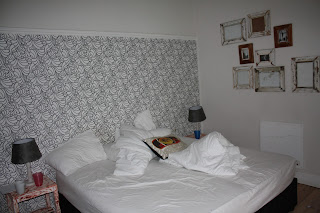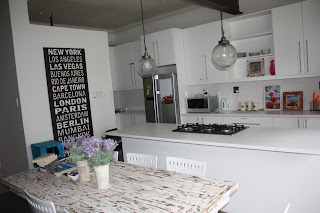“They’re just as good if you inflate them enough,” my
boyfriend Tom insisted, jamming his knee up and down, bringing our kayak closer
to life with every thrust of the foot pump.
Enticed to Menorca by a wave of adverts hailing the island as
a ‘paradise for paddlers’, Tom had rejected my suggestion to hire a ‘real’
kayak, (the sturdy, fibre-glass type) insisting we squash a week’s worth of
clothes into one bag and bring our blow-up boat in place of a second suitcase.
Kayak inflated, we threw in the essentials for a full day at
sea: wine, fishing rod and a picnic of fresh bread, local cheese and Menorcan sobrasada – chorizo-like
sausage meat.
Setting-off from the waterside capital of Mahon, we drifted into
the calm waters of the world’s second biggest natural harbour. The plan was to
paddle for a couple of hours to the cove of Cala Alcaufar for lunch, then
continue west along the island’s smooth southern shoreline to Son Bou – Menorca’s
longest beach.
“This is easy,” boasted Tom, casting a line of glinting fish
hooks into the water while I propelled us along with effortless paddling.
We cruised past an 18th century British Naval
Hospital on King Island, giving the yachts that ply these busy waters a wide
berth as they motored by. Above our heads, the smart villas of Menorca’s elite studded
the cliff-tops and down at sea-level, oily feathered shags stood watch over teeming
rock pools.

With the Mediterranean Sea in sight, a breeze agitated my hair, the water began to dance and the nose of our kayak bounced playfully in the chop. Avoiding the rocks where clusters of muscles waited like razors, we steered towards the harbour mouth until a strong pull sucked us out to sea.
Once in open water, someone switched on the wave-machine. Rollers,
breakers, white horses and roaring surf came at us from every direction, tossing
us about like a toy boat. Salt water splashed over the bow, surged over the
stern and the horizon bounced around like the attitude indicator on a fighter
plane.
Seasickness soon arrived on the scene and Tom started retching over the
side.
The killer blow came from a side-on wave that had us clutching
at the paddle holders like petrified children while water inundated the boat.
“The picnic!” Tom gasped,
as our lunch abandoned ship.
“My sandal!” I
shrieked, seeing the left foot sail away like a tiny life-boat.
Then I saw it: an inlet of snaking sheltered water beckoned
just ahead.
Paddling furiously towards our escape route, we missioned
away from the Med until the swell and our sickness subsided. When it was calm
enough to balance our paddles across our laps, we collapsed on our backs like wounded
soldiers – two dead bodies lolling on a drifting waterbed.
I was jolted awake ten minutes later when Tom dived
overboard. Before I could panic, he burst to the surface holding two clenched
fists above his head. “Which colour?” he asked, bobbing up and down as if on a
running machine, and unfurled his palms to reveal two tiny sea urchins – one moss-green
the other a deep lavender.
We had entered Eden.
A narrow channel, sheltered from the sea, rocky banks draped in greenery rose around us and emerald-tinged waters bathed our boat. We weaved
along the watercourse, listening to the plop of leaping fish, their silver bodies
twinkling in the sun like jewels.
We tied our kayak to a tree and scrambled ashore, heaving
ourselves up on roots that dangled over the banks like ropes.
We’d completed a fraction of our intended voyage but,
between us, deemed it too dangerous to continue by kayak.
Instead, we resumed our exploration on foot and clambered through
the foliage to find a rugged pathway that broke away from the inlet: we had
stumbled across the Cami de Cavalls – an ancient bridleway which circumnavigates
the island. Once used by messengers to carry news of attack, the trail had recently
been restored as a waymarked route, open to horses, bikes and hikers.
I walked barefoot, red dust collecting between my toes as I
padded across the hot ground. Where the track traced through scrubland, the smell
of wild olives and rosemary filled our nostrils and, as we entered shaded
woodlands, I trod carefully where pine-needles carpeted the path.
An hour later, to our surprise, we arrived in Cala Alcaufar.
An hour later, to our surprise, we arrived in Cala Alcaufar.
Toasting our successful escape-mission from the claws of the
Med, we tucked into fresh sardines at a restaurant right on the beach. Children
splashed and screeched in the shallows, ramblers and cyclists continued across
the cliff-tops along the Cami de Cavalls and two kayakers casually paddled into
shore before pulling their fibre-glass boats onto the beach.
“It’s easier in a ‘real’ kayak,” Tom mumbled, barely looking
up from his lunch.
Travel article by Brighton copywriter and Journalist, Lucy Grewcock.







